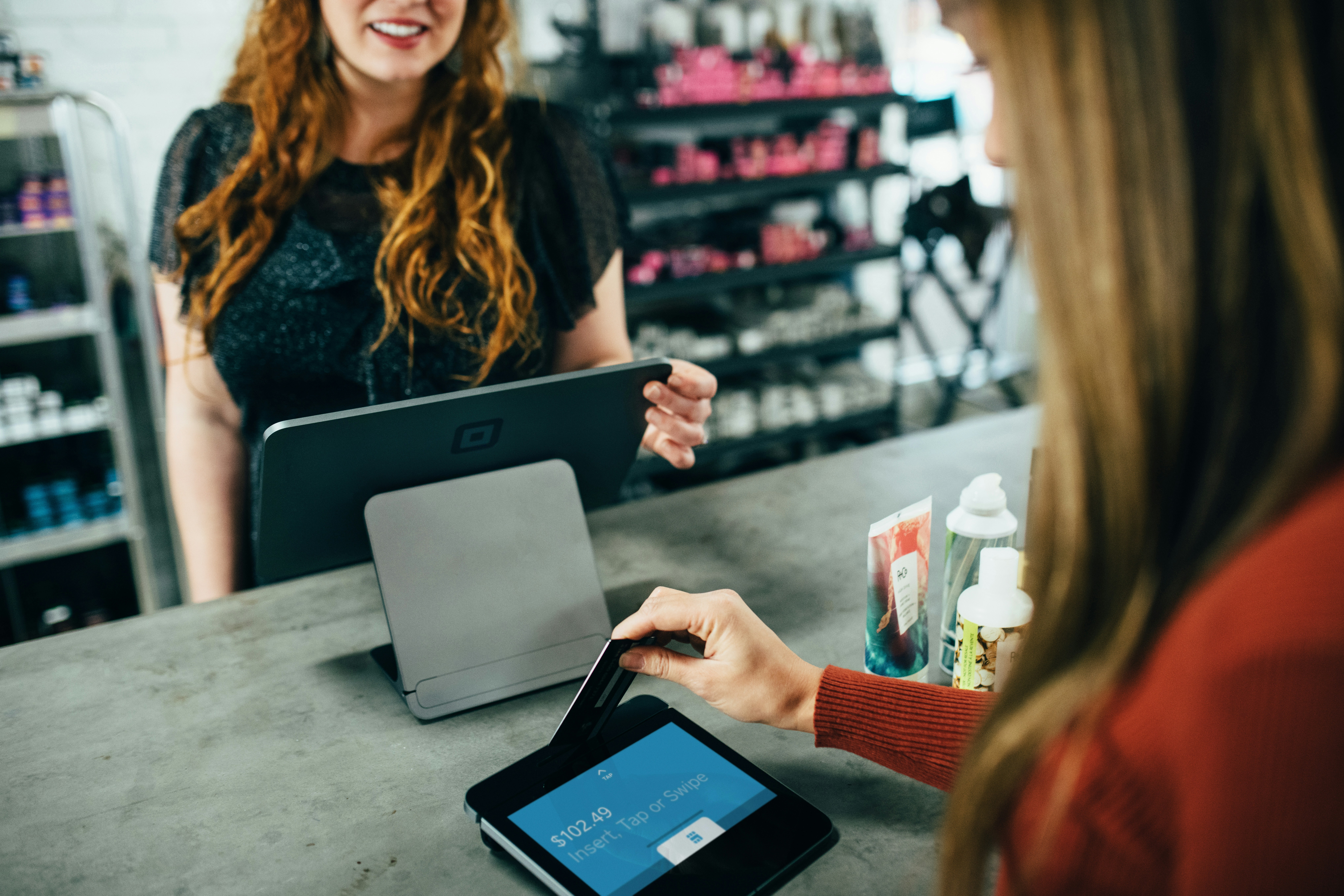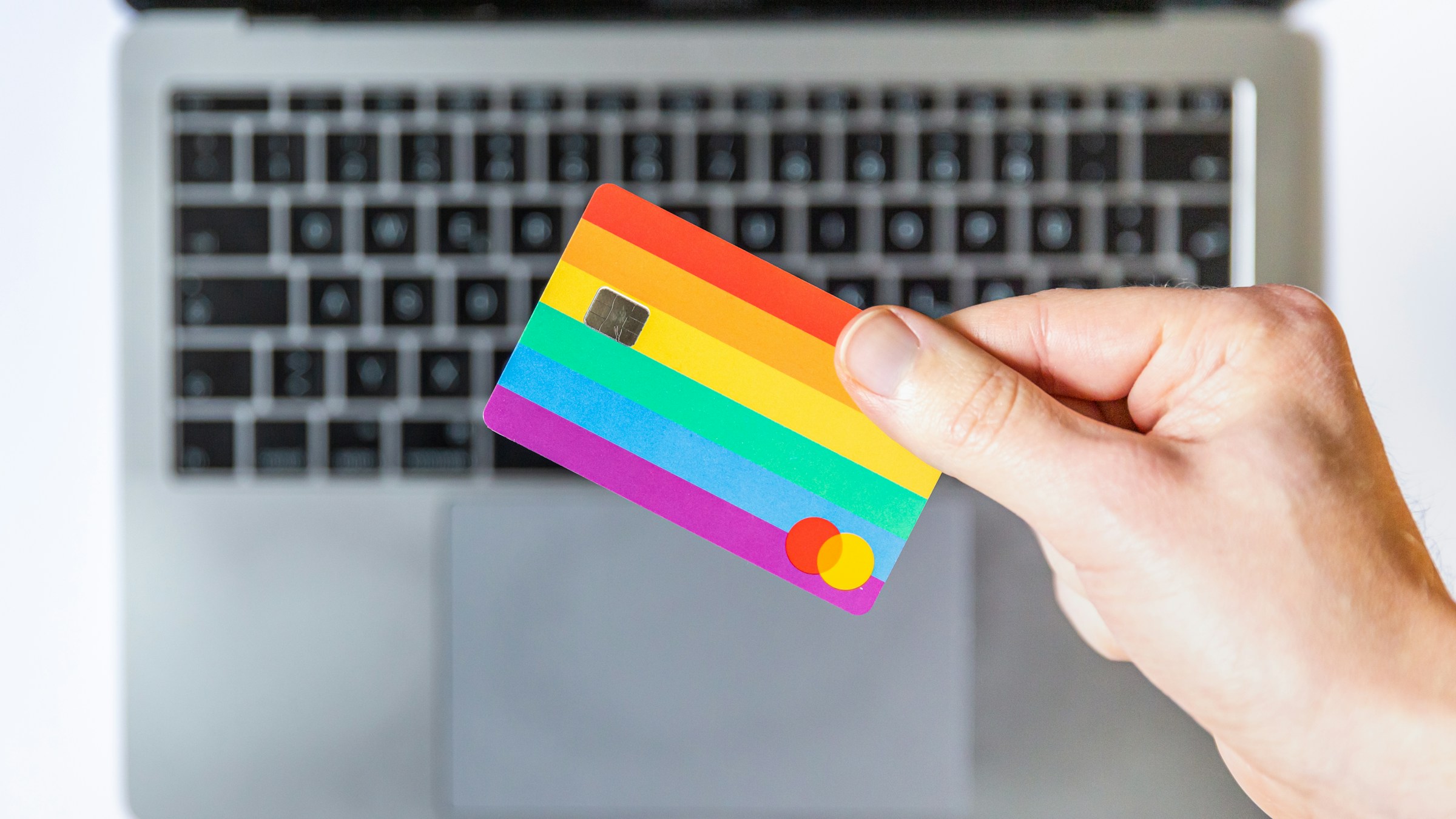Everything You Need To Know About B2C Sales
Aug 16, 2024
Consider you're shopping at your favorite store. You know what you want but are confused about the options available. Then, someone from the store approaches you and offers to help. They quickly assess your needs and guide you to the right product. This 'someone' is a salesperson, and their sales skills can make or break your buying experience.
You may feel even more confused and annoyed if their approach is too pushy. But if they personalize their response to your needs, you can have a smooth and pleasant buying experience. This scenario illustrates the significance of B2C sales not only for businesses but also for customers. Sales skills can enhance the buyer's journey, leading to happier customers and increased sales for businesses.
This guide will illuminate B2C sales and help you understand everything you need to know about this vital revenue-generating process. Dopplio's tool helps businesses make the right sales decisions by personalizing B2C interactions. This tool allows you to reach your sales goals faster and enhance the customer experience.
Table of Contents
Understanding Business-to-Consumer (B2C)
B2C Sales Overview
B2C Sales Strategies and Processes
Measuring and Optimizing B2C Sales
B2C Sales Challenges and Solutions
B2C Companies and Mobile
Practical Applications and Examples
Get 3x Higher Reply Rates with Our Personalized Video Creator.
Understanding Business-to-Consumer (B2C)

B2C (Business-to-Consumer) refers to the process in which businesses sell goods or services directly to consumers, who are the end-users of those products. Unlike B2B (Business-to-Business), where business transactions occur, B2C focuses on the individual consumer. This model is prevalent in retail, e-commerce, and services industries, where companies aim to meet consumers' immediate needs and preferences.
B2C transactions often involve single-step sales processes and shorter buying cycles, with companies targeting mass-market segments through advertising and digital marketing.
The Characteristics of B2C Transactions
Ten key characteristics define B2C transactions:
1. High Volume, Low Cost
B2C businesses generally operate on a model where they sell large volumes of goods or services at relatively low prices.
2. Shorter Sales Cycles
The decision-making process in B2C is quick. Consumers often make impulse purchases, influenced by price, convenience, and branding.
3. Personalized Marketing
B2C relies on targeted marketing campaigns focusing on the consumer's preferences and behavior patterns.
4. Emotional Buying Decisions
Consumers often purchase based on emotional connections or impulses rather than business needs or logic.
5. Mass Market
B2C businesses often cater to a broad audience rather than a niche market, aiming to attract as many individual consumers as possible.
6. Omnichannel Presence
To reach consumers, B2C businesses leverage multiple platforms, such as brick-and-mortar stores, online storefronts, mobile apps, and social media.
7. Frequent Transactions
B2C transactions are usually repetitive, with consumers frequently purchasing lower-value items such as groceries or clothing.
8. Convenience Focus
The buying experience in B2C is often driven by convenience, with many businesses offering seamless shopping options like click-and-collect, online ordering, and home delivery.
9. Digital Integration
Many B2C businesses are digitally integrated, allowing consumers to complete purchases online, track orders, or interact with customer service.
10. Customer Loyalty Programs
B2C businesses often incorporate loyalty programs and incentives to retain customers and encourage repeat purchases.
B2C Storefronts vs. Internet Retailers
Discover the differences between physical B2C storefronts and online B2C retailers:
Physical B2C Storefronts
These refer to brick-and-mortar stores where consumers can walk in, browse, and purchase products. The in-person experience allows for immediate interaction with products and personalized customer service. Physical storefronts rely on location, foot traffic, and ambiance to attract customers.
Online B2C Retailers
These are digital storefronts where consumers browse products or services online. Purchases are made through websites or mobile apps, often offering broader product selection, convenience of shopping from home, and advanced algorithms for personalized recommendations. Online retailers use digital marketing, SEO, and user experience design to drive sales.
Key Differences
1. Customer Interaction
Physical stores offer face-to-face customer interaction, while online stores offer customer service through live chat, email, or AI-driven technology.
2. Product Availability
Physical stores have limited shelf space, while online retailers can showcase an extensive inventory.
3. Overhead Costs
Physical storefronts require substantial overhead for rent, utilities, and staff, whereas online retailers can often operate with lower overhead by eliminating physical locations.
4. Shopping Experience
Physical stores offer tactile experiences—consumers can touch and try products. Online stores provide convenience and speed but lack immediate physical interaction with products.
The Impact of Digital Transformation on B2C
Digital transformation has profoundly impacted B2C operations by reshaping consumer interactions, sales strategies, and operational efficiencies. Businesses leverage AI, data analytics, automation, and digital marketing to create personalized and scalable customer experiences. Brands can now interact with consumers across multiple platforms, offer customized recommendations, and streamline their operations with e-commerce and mobile commerce technologies.
The Role of E-commerce and Mobile Commerce in B2C
1. Convenience
E-commerce and mobile commerce enable consumers to shop from anywhere at any time, significantly increasing customer engagement and retention.
2. Personalization
AI-powered platforms analyze consumer data to provide personalized product recommendations and marketing messages.
3. Broader Market Reach
Digital platforms allow B2C businesses to expand beyond local markets, reaching national and international consumers.
4. 24/7 Availability
Unlike physical stores, e-commerce sites are open 24/7, providing continuous sales opportunities.
5. Data-Driven Marketing
Digital tools provide businesses with deep insights into consumer behavior, enabling more targeted and effective marketing strategies.
6. Omnichannel Integration
Companies can offer seamless customer experiences by integrating online and offline channels, ensuring consistent platform engagement.
7. Mobile Payments
The rise of mobile commerce has made it easier for consumers to pay via mobile wallets and apps, speeding up the purchase process.
8. Subscription Models
Digital platforms have enabled B2C companies to offer subscription-based models that provide recurring revenue and long-term customer relationships.
9. Faster Transactions
Integrating mobile commerce allows for quick, secure payments, increasing transaction speed and reducing cart abandonment rates.
10. Sustainability
E-commerce allows companies to operate more sustainably by reducing the need for physical storefronts and streamlining supply chains.
Related Reading
• Sales Pitch Examples
• Sales Process
• What Is B2B Sales
• Sales Techniques
• Entry Level Sales
• Sales Funnel Stages
• Sales Metrics
• How to Get Into Sales
B2C Sales Overview

B2C Sales Overview B2C sales involve selling products and services to individual consumers. This is different from B2B sales, which occur between businesses. B2C sales focus on driving consumer interest, creating a seamless path to purchase, and providing customer service to encourage repeat transactions. In B2C, speed and customer satisfaction are paramount, and marketing strategies often appeal to emotions, personal benefits, and convenience.
Key Differences Between B2C Sales and B2B Sales Sales Cycle
B2C sales cycles are typically shorter and driven by individual decision-making, while B2B sales often involve a lengthier, more complex process involving multiple stakeholders.
Emotional vs. Rational
B2C purchases are often more emotionally driven, whereas B2B transactions are based on business needs and rational decisions.
Volume and Price
B2C sales tend to be high in volume but low in price, while B2B transactions are usually lower in volume but higher in price. Examples of B2C Sales Examples include online retail transactions (Amazon), fast food purchases (McDonald's), subscription services (Netflix), and mobile app sales (Spotify). Each of these industries serves individual consumers by fulfilling personal needs or providing convenience and entertainment.
Types of B2C Sales Direct Sales: In-person sales at retail stores.
Online Sales
Purchases are made through websites and apps.
Subscription-Based
Regular, recurring payments for services or products (e.g., Dollar Shave Club).
Marketplace Sales
Sales are conducted via platforms like eBay or Etsy, where businesses sell directly to consumers.
How Does B2C Work?
The B2C process typically begins with marketing efforts aimed at generating consumer interest. Once a potential customer shows interest, the sales process guides them toward the purchase, often involving digital marketing strategies like retargeting ads, personalized recommendations, or email campaigns. Post-purchase, customer service, and engagement ensure satisfaction and encourage repeat business.
Who Are B2C Buyers?
B2C buyers are everyday consumers looking for goods and services to satisfy personal needs or desires. They are influenced by factors such as convenience, price, brand reputation, and emotional appeal. Unlike B2B buyers, they are not making purchases on behalf of an organization but for personal use.
Skills Needed for B2C Key skills include customer service, digital marketing, sales acumen, and data analysis. These skills help sales professionals understand consumer behavior, craft personalized experiences, and optimize the sales process for efficiency.
Is B2C Sales a Good Career?
B2C sales can be a rewarding career, especially for individuals who enjoy working with people, have a passion for customer service, and are driven by achieving sales targets. However, it can also be competitive and fast-paced, requiring constant learning and adaptation to consumer trends.
How to Learn B2C Sales Sales training programs, online courses, and mentorships are excellent ways to learn B2C sales. Continuous development in digital marketing, customer relationship management (CRM) tools, and consumer psychology will help professionals excel in this field. Integrating Dopplio into B2C Strategies Dopplio offers businesses a powerful tool to generate personalized videos at scale for customer outreach.
By combining AI-powered personalization with the authenticity of human-created videos, Dopplio helps B2C companies increase engagement and conversion rates, ultimately driving higher sales and customer satisfaction. Dopplio integrates with workflows, offering a cost-effective solution to personalize videos for thousands of leads.
Try Dopplio And Generate Personalized Videos At Scale
Dopplio is transforming personalized outreach for sales and marketing teams. We blend authentic human-made videos with AI personalization, giving you the best of both worlds - the genuine feel of real people with the scalability of technology. Our solution delivers 3x higher reply rates compared to traditional methods.
With Dopplio, you can create a single charismatic video and then personalize it for thousands of leads, greeting each by name. Our platform allows you to generate videos in bulk, automatically voice clone and lip-sync to maintain authenticity, and integrate seamlessly with Zapier to kick off your existing workflows.
Plus, we offer the option to share your personalized videos as attention-grabbing GIFs. The best part? Dopplio provides all this at just a tenth of the cost of enterprise options. So, if you're a tech sales rep or marketing agency looking to boost conversions, Dopplio offers the perfect blend of personalization, scalability, and cost-effectiveness.
Try Dopplio and generate personalized videos at scale today!
Related Reading
• Marketing Vs Sales
• Is Sales A Good Career
• Types Of Sales Jobs
• Types Of Sales Strategies
• Sales Roles
• Sales Psychology
• Client Prospecting
• Sales Kpis
• Relationship Selling
• Sales Programs
• Sales Trends
B2C Sales Strategies and Processes

B2C sales strategies focus on a business selling products or services directly to individual consumers instead of to other businesses. Business-to-consumer sales rely on different tactics than B2B sales (business-to-business sales) because the two types of customers have different needs and priorities.
B2C customers seek products that meet their needs and preferences, while B2B customers seek items to help their business or improve operations. B2C sales strategies can help businesses attract, engage, and convert customers. Some common B2C sales strategies include:
B2C Sales Processes Explained
The B2C sales process typically involves the following stages:
1. Lead Generation
Attracting potential customers through various channels, such as advertising, content marketing, and referrals.
2. Lead Qualification
Assessing the likelihood of a lead converting into a paying customer based on interest, budget, and decision-making authority.
3. Needs Assessment
Understanding the customer's needs, pain points, and preferences through conversation and research.
4. Product Presentation
Showcasing the product's features, benefits, and value proposition in a way that resonates with the customer.
5. Objection Handling
Addressing any concerns or hesitations the customer may have about purchasing.
6. Closing the Sale
Guiding the customer through the final steps of the purchase process, such as providing payment options and order confirmation.
7. Customer Onboarding
Ensuring a smooth transition from the sales process to the customer experience, providing necessary support or training.
8. Follow-up and Retention:
Regularly communicate with customers to address issues, gather feedback, and encourage repeat business or referrals.
What Is B2C Sales Prospecting?
B2C sales prospecting identifies and reaches out to potential customers likely to be interested in the product or service. Some effective techniques for B2C sales prospecting include:
1. Demographic Targeting
Identifying target customer segments based on age, income, location, and interests.
2. Referral Marketing
Encouraging existing customers to refer friends, family, or colleagues who may also benefit from the product or service.
3. Content Marketing
Creating and distributing relevant content (e.g., blog posts, videos, webinars) to attract and engage potential customers.
4. Social Media Outreach
Connecting with potential customers through social media platforms and engaging with them through relevant content and interactions.
5. Event Participation
Attending or sponsoring industry events, trade shows, or community gatherings to network and connect with potential customers.
6. Targeted Advertising
Running targeted advertising campaigns on search engines, social media platforms, or industry-specific websites to reach potential customers.
7. Direct Mail
Sending personalized direct mail pieces, such as postcards or brochures, to potential customers in specific geographic areas or demographics.
8. Cold Calling
Reaching out to potential customers via phone or email to introduce the product or service and gauge their interest.
What’s In a B2C Sales Playbook?
A B2C sales playbook is a comprehensive guide that outlines the company's sales strategy, processes, and best practices. It typically includes:
1. Company Overview
Information about the company's history, mission, values, and unique selling propositions.
2. Target Customer Profiles
Detailed descriptions of the company's ideal customer segments, including their demographics, psychographics, and buying behaviors.
3. Sales Process
A step-by-step guide to the company's sales process, including lead generation, qualification, presentation, and closing.
4. Product Knowledge
Detailed information about the company's products or services, including features, benefits, pricing, and positioning.
5. Competitor Analysis
An assessment of the company's competitors, including their strengths, weaknesses, and market positioning.
6. Sales Scripts and Objection Handling
Sample scripts and strategies for handling common customer objections and concerns.
7. Sales Tools and Resources
A list of the tools and resources available to sales representatives, such as CRM software, marketing materials, and training programs.
8. Performance Metrics
Key performance indicators (KPIs) and targets for measuring the success of the sales team and individual sales representatives.
9. Compensation and Incentives
Information about the company's sales compensation structure and incentive programs.
10. Continuous Improvement
A process for gathering feedback, analyzing performance data, and improving the sales playbook.
What Are the B2C Sales Methods?
B2C sales methods can be broadly categorized into two main types: inbound and outbound.
Inbound Sales Methods:
1. Content Marketing
Creating valuable, relevant content to attract potential customers and build trust.
2. Search Engine Optimization (SEO)
Optimizing websites and content to rank higher in search engine results and attract organic traffic.
3. Social Media Marketing
Engaging with potential customers through social media platforms and building brand awareness.
4. Referral Marketing
Encouraging existing customers to refer friends, family, or colleagues who may also benefit from the product or service.
Outbound Sales Methods
1. Cold Calling
Reaching out to potential customers via phone or email to introduce the product or service and gauge their interest.
2. Direct Mail
Sending personalized direct mail pieces, such as postcards or brochures, to potential customers in specific geographic areas or demographics.
3. Trade Shows and Events
Attending or sponsoring industry events, trade shows, or community gatherings to network and connect with potential customers.
4. Targeted Advertising
Running targeted advertising campaigns on search engines, social media platforms, or industry-specific websites to reach potential customers.
The choice of sales method depends on factors such as the target customer segment, the company's resources and capabilities, and the competitive landscape.
What Are the Principles of B2C Sales?
The following principles guide effective B2C sales:
1. Customer-Centricity
Putting the customer's needs and preferences at the center of the sales process.
2. Transparency
Being upfront and honest about the product or service, including its features, benefits, and limitations.
3. Personalization
Tailoring the sales approach to each customer's needs and preferences.
4. Convenience
Making the sales process as easy and hassle-free as possible for the customer.
5. Responsiveness
Quickly address customer inquiries and concerns and provide timely follow-up.
6. Consistency
Delivering a consistent brand experience across all touchpoints and interactions.
7. Continuous Learning
Staying up-to-date with industry trends, customer preferences, and best practices in B2C sales.
8. Collaboration
Working closely with other departments, such as marketing and customer service, to deliver a cohesive customer experience.
9. Adaptability
Being flexible and responsive to changing market conditions and customer needs.
10. Integrity
Maintaining high ethical standards and always acting in the customer's best interest.
What Does a B2C Sales Rep Do?
A B2C sales representative is responsible for engaging with potential customers, understanding their needs, and guiding them through the sales process. Their primary responsibilities include:
1. Lead Generation
Identifying and qualifying potential customers through various prospecting methods.
2. Customer Engagement
Initiating and maintaining regular customer communication through phone, email, or in-person interactions.
3. Needs Assessment
Conducting thorough needs assessments to understand the customer's specific requirements and preferences.
4. Product Presentation
Showcasing the product or service's features, benefits, and value proposition compellingly and persuasively.
5. Objection Handling
Addressing any concerns or hesitations the customer may have about purchasing.
6. Closing the Sale
Guiding the customer through the final steps of the purchase process and ensuring a smooth transaction.
7. Customer Onboarding
Providing any necessary support or training to help the customer get started with the product or service.
8. Follow-up and Retention
Regularly communicate with customers to address issues, gather feedback, and encourage repeat business or referrals.
9. Data Tracking
Accurately recording customer interactions, sales activities, and performance metrics in the company's CRM system.
10. Continuous Learning
Staying up-to-date with product knowledge, sales techniques, and industry trends to improve their effectiveness.
A typical day for a B2C sales representative may involve a combination of the following activities:
1. Lead Generation
Researching potential customers, attending networking events, or participating in lead generation campaigns.
2. Customer Outreach:
Initiating contact with potential customers through phone calls, emails, or social media to introduce the product or service and gauge their interest.
3. Needs Assessment
Conducting in-depth conversations with customers to understand their needs, pain points, and preferences.
4. Product Presentation
Showcasing the product or service's features, benefits, and value proposition through demonstrations, samples, or case studies.
5. Objection Handling
Addressing any concerns or hesitations the customer may have about purchasing, such as pricing, quality, or compatibility.
6. Closing the Sale
Guiding the customer through the final steps of the purchase process, such as providing payment options, order confirmation, and delivery details.
7. Customer Onboarding
Providing any necessary support or training to help the customer get started with the product or service, such as setting up accounts, configuring settings, or providing user guides.
8. Follow-up and Retention
Regularly communicate with customers to address any issues, gather feedback, and encourage repeat business or referrals.
9. Data Tracking
Accurately record customer interactions, sales activities, and performance metrics in the company's CRM system for reporting and analysis.
10. Continuous Learning
Attend training sessions, read industry publications, or participate in online courses to stay up-to-date with product knowledge, sales techniques, and industry trends.
Measuring and Optimizing B2C Sales
Business-to-consumer sales (B2C sales), or transactions between individuals and businesses, describe these transactions. Measuring and optimizing B2C sales helps organizations understand and improve their performance, leading to better sales outcomes and boosted revenue. B2C sales can happen online and offline through many different channels.
For example, a customer might buy something from a business’s website after discovering it on social media. Alternatively, they may find it in a physical store after seeing a post on the business’s profile. No matter how they get there, understanding and optimizing B2C sales processes can help improve customer satisfaction and increase conversions.
B2C Sales Challenges and Solutions

B2C sales can be wildly profitable but also have unique challenges. Let's examine some of those obstacles and how to overcome them.
Finding and Attracting the Right Customers
Especially for new businesses, one of the first hurdles to overcome when selling directly to consumers is finding and attracting the right customers. The challenge doesn’t end when you generate a few leads, either. The longer you stay in business, the more leads you generate, and the more you’ll have to focus on attracting the right customers.
Not all leads are created equal. For instance, a lead or prospect from an organic search for “best eco-friendly laundry detergent” is likely much more interested in your product than someone who randomly stumbled upon your website or social media page. The former is more likely to convert into a paying customer and then a repeat buyer, while the latter may just be looking to gather information.
Solution:
To overcome this challenge, you must identify your ideal customer profile and buyer personas, then create targeted strategies to attract them. This can involve running highly targeted pay-per-click ads, creating content to improve organic search visibility, and leveraging social media to connect with your audience.
Increasing Sales in Competitive Markets
Another challenge B2C businesses face is increasing sales in competitive markets. The internet has made it easy to set up shop and sell products online, leading to an influx of businesses selling similar products and services.
For instance, if you sell eco-friendly laundry detergent, a quick search online will yield dozens of competitors, including well-known brands and niche businesses that may even operate out of your local area. To make matters worse, many of these businesses have been around longer than you, and they likely have established customer bases and strong reputations.
Solution
While it may seem daunting, there are ways to compete with businesses like these, even if they’re much more extensive than you. Focus on differentiating your B2C business from the competition. This means highlighting what makes your products, services, and brand unique. For instance, eco-friendly laundry detergent companies may differ in scent, ingredients, packaging, and even the story behind the brand. Find a way to make your business stand out from the pack, and don’t be afraid to promote your unique qualities to attract the right customers.
Building Customer Loyalty and Retention
Consumers today have more options than ever, so loyalty is pretty fickle. Even if you attract and convert a customer, there’s no guarantee they’ll return for a repeat purchase. They may find your business through a web search, but they could easily find a competitor with similar products or services.
Solution
To overcome this challenge, B2C businesses must focus on building customer loyalty and retention to ensure continued sales and revenue. You can start by enhancing the customer experience to make it easy to do business with you and exceed customer expectations.
Utilizing Data for Better Sales Decisions
Finally, the sheer amount of data available to today’s B2C businesses can be overwhelming. Analytics can provide valuable insights about customers, sales, and marketing strategies, but only if you know how to use them.
Solution
To overcome this challenge, start small. You don’t need to analyze every available data to make informed business decisions. Instead, focus on the metrics that directly affect your current goals. For instance, if you aim to improve your sales process, look at customer purchase patterns and behaviors to identify areas for improvement. Once you’ve made the necessary adjustments, you can revisit your analytics to see how the changes impacted your sales.
B2C Sales KPIs: What Are They?
Key performance indicators, or KPIs, for B2C sales, help measure sales strategies' effectiveness and identify areas for improvement. Some common B2C sales KPIs include:
Revenue
Total sales revenue generated over a specific period.
Sales Growth
Year-over-year or quarter-over-quarter growth in sales revenue.
Average Order Value (AOV):
The average amount spent per transaction.
Customer Acquisition Cost (CAC)
Acquiring a new customer.
Customer Lifetime Value (CLV)
The total revenue a customer is expected to generate over their lifetime.
Conversion Rate
The percentage of leads that convert into paying customers.
Lead-to-Customer Ratio
The ratio of leads to customers.
Customer Retention Rate
The percentage of customers who continue to do business with the company over time.
Net Promoter Score (NPS)
A measure of customer loyalty and satisfaction.
Return on Investment (ROI)
The ratio of revenue generated to the cost of sales and marketing efforts.
The Top B2C Sales KPIs to Track
The most important B2C sales KPIs to track depend on the company's goals and objectives. However, some of the top KPIs that are commonly tracked include:
Revenue
Tracking total sales revenue is crucial for understanding the sales team's performance and identifying growth opportunities.
Conversion Rate
Monitoring conversion rates helps identify which sales strategies and tactics are most effective in converting leads into customers.
Customer Lifetime Value (CLV)
Tracking CLV helps companies understand their customers' long-term value and make informed decisions about customer acquisition and retention strategies.
Customer Acquisition Cost (CAC)
Monitoring CAC helps companies ensure that their sales and marketing efforts are cost-effective and generate a positive return on investment.
Net Promoter Score (NPS)
Tracking NPS provides valuable insights into customer satisfaction and loyalty, which can inform product development, customer service, and sales strategies.
Average Order Value (AOV)
Monitoring AOV helps companies identify opportunities to increase revenue per customer through cross-selling, upselling, or bundling strategies.
Customer Retention Rate
Tracking customer retention rates helps companies identify which customers are most likely to remain loyal and which may be at risk of churning.
Lead-to-Customer Ratio
Monitoring the lead-to-customer ratio helps companies identify which lead-generation strategies are most effective and where there may be opportunities to improve conversion rates.
Return on Investment (ROI)
Tracking ROI helps companies ensure that their sales and marketing efforts generate a positive return on investment and identify areas for optimization.
Sales Cycle Length
Monitoring the length of the sales cycle helps companies identify opportunities to streamline the sales process and reduce the time it takes to close deals.
What Is a Good Close Rate for B2C Sales?
The average close rate for B2C sales varies depending on the industry, product, and sales strategy. However, some general benchmarks for B2C sales close rates include:
Retail Sales
The average close rate is typically around 20-30%.
E-commerce Sales
The average close rate for e-commerce sales is typically around 1-3%.
Service-based Sales
The average close rate for service-based sales is around 10-20%.
Subscription-based Sales
The average close rate for subscription-based sales is typically around 5-10%.
It's crucial to note that these are just general benchmarks. Actual close rates can vary significantly depending on the company's sales strategy, target market, and competitive landscape.
How Long Is the Average B2C Sales Cycle?
The average length of the B2C sales cycle can vary depending on the industry, product, and
target market. However, some general benchmarks for the B2C sales cycle length include:
Retail Sales
The average sales cycle for retail sales is typically less than a day.
E-commerce Sales
The average sales cycle for e-commerce sales is typically less than an hour.
Service-based Sales
The average sales cycle for service-based sales is typically around 1-3 months.
Subscription-based Sales
The average sales cycle for subscription-based sales is typically around 1-6 months.
Factors that can affect the length of the B2C sales cycle include the complexity of the product or service, the customer's decision-making process, the level of competition in the market, and the effectiveness of the company's sales and marketing efforts.
What Is the Best Time of Day to Sell B2C?
The best time of day to sell B2C can vary depending on the industry, target market, and sales channel. However, some general insights into optimal times for B2C sales interactions include:
Retail Sales
Retail sales peak in the afternoon and evening, with the busiest times often between 2 p.m. and 6 p.m.
E-commerce Sales
E-commerce sales peak in the evening, with the busiest times often being between 8 p.m. and 11 p.m.
Service-based Sales
Service-based sales tend to peak in the morning and early afternoon, with the busiest times often between 9 a.m. and 2 p.m.
Subscription-based Sales
Subscription-based sales peak during the evening, with the busiest times often being between 6 pm and 10 pm.
Actual sales patterns vary significantly depending on the company's target market, sales strategy, and competitive landscape.
B2C Companies and Mobile

B2C or business-to-consumer companies market their products and services directly to individual shoppers. This differs from B2B (business-to-business) sales, where company transactions occur. The rise of mobile technology has had a significant impact on B2C sales and customer engagement.
As consumers increasingly rely on their smartphones and tablets for shopping, communication, and entertainment, B2C companies have had to adapt their strategies to meet their target audience's changing needs and expectations.
Impact of Mobile Technology on B2C Sales and Customer Engagement
Increased Accessibility: Mobile devices have made it easier for consumers to access product information, compare prices, and purchase anytime, anywhere.
Enhanced Customer Experience:
With features like push notifications, location-based services, and augmented reality, B2C companies can use mobile apps and websites to provide a more personalized and engaging customer experience.
Improved Targeting and Segmentation
Mobile data can provide valuable insights into consumer behavior, enabling B2C companies to target their marketing efforts more effectively and tailor their messaging to specific segments.
Increased Impulse Purchases:
The convenience and accessibility of mobile shopping can lead to more impulse purchases, as consumers can easily browse and buy products on the go.
Improved Customer Loyalty
B2C companies can use mobile loyalty programs, exclusive offers, and personalized content to build stronger customer relationships and encourage repeat business.
B2C vs. B2B in the Context of Mobile Technology
While both B2C and B2B companies can benefit from mobile technology, there are some critical differences in how they approach and implement it:
Target Audience
B2C companies focus on individual consumers, while B2B companies target other businesses. This means that B2C mobile strategies must be more consumer-friendly and engaging, while B2B strategies may focus more on providing information and facilitating transactions.
Sales Cycle
B2C sales cycles are generally shorter and more impulse-driven, while B2B sales cycles are longer and involve more decision-makers. B2C companies may use mobile to drive immediate sales, while B2B companies may use it to provide information and build relationships.
Content and Messaging
B2C mobile content and messaging tend to be more visual, emotional, and personalized, while B2B content may be more technical, informative, and focused on business value.
Channels
B2C companies may use a wider range of mobile channels, such as social media, messaging apps, and mobile ads, while B2B companies may focus more on email, webinars, and industry publications.
Metrics
B2C mobile metrics may focus more on engagement, conversion, and loyalty, while B2B metrics may focus more on lead generation, pipeline growth, and revenue.
Practical Applications and Examples

Business-to-consumer sales occur when a business sells goods or services directly to individual customers. B2C sales can happen both online and offline. For example, buying shoes from an e-commerce website is B2C sales. If you had gone to a physical store and purchased those shoes instead, that still would have been B2C sales.
B2C sales often refer to online transactions — especially when discussing how businesses can leverage digital tools to improve their B2C sales. As a result, B2C sales can benefit from the same technological advancements as e-commerce, such as artificial intelligence, automation, and machine learning.
Practical Applications and Examples of B2C Sales
Like any other type of sales, business-to-consumer transactions have practical applications that extend beyond getting products into customers' hands. B2C sales help businesses create organized processes for managing customers and fulfilling individual orders. They also improve customer experience by streamlining the buying process and making it easier for customers to purchase products that meet their needs.
What Is an Example of a Business-to-Consumer Company?
Some examples of successful B2C companies include:
Amazon
One of the largest e-commerce platforms, offering a wide range of products and services to individual consumers.
Apple
Known for its innovative consumer electronics, such as iPhones, iPads, and MacBooks, as well as its App Store and digital services.
Nike
A leading sportswear and equipment brand that sells directly to consumers through its retail stores, website, and mobile app.
Netflix
A popular streaming service that provides on-demand movies, TV shows, and original content to individual subscribers.
Starbucks
A global coffee shop chain that offers consumers a range of beverages, food, and merchandise in a personalized and experiential setting.
What Are the 5 Types of Business-to-Consumer Models?
Business-to-consumer sales can take many different forms. The five most common B2C models include:
1. Direct-to-consumer (DTC)
Companies that sell their products directly to consumers through their channels, such as websites, mobile apps, or physical stores.
2. E-commerce
Online platforms that enable consumers to purchase products or services from multiple retailers or brands.
3. Subscription
Companies that offer recurring deliveries of products or access to services in exchange for a regular fee.
4. Marketplace
Online platforms connect consumers with multiple sellers, enabling them to browse, compare, and purchase various products and services.
5. Social Commerce
Integrating e-commerce features and functionality into social media platforms enables consumers to discover, share, and purchase products directly within their social networks.
Dopplio’s Role in Enhancing B2C Mobile Strategies
Dopplio can help B2C companies enhance their mobile strategies by providing a powerful tool for creating personalized video content at scale. By blending authentic human-made videos with AI personalization, Dopplio enables B2C companies to deliver a more engaging and memorable customer experience through their mobile channels.
With Dopplio, B2C companies can create a single charismatic video and then personalize it for thousands of leads, greeting each by name. This can increase engagement, drive conversions, and build stronger customer relationships on mobile platforms.
Get 3x Higher Reply Rates with Our Personalized Video Creator.
Dopplio combines AI video technology with an authentic human touch. While other B2B video personalization tools are on the market, Dopplio stands out for its focus on personalization and scalability. The platform allows you to create a single charismatic video, personalize it for thousands of leads, and generate them in bulk.
With Dopplio, you can automatically voice-cone and lip-sync to maintain authenticity and create a seamless experience for your prospects. Dopplio integrates with existing workflows to make the process as smooth as possible, so you can spend less time on outreach and more time closing deals.
How Can Dopplio Help Boost B2B Sales?
If you're looking to enhance your B2B sales efforts, Dopplio can help. The platform allows you to create engaging personalized videos that grab your prospects' attention and boost your response rates.
Instead of sending hundreds of dull, templated emails, you can send a personalized video that directly addresses your leads and speaks to their unique pain points. Dopplio's authentic, human touch helps build rapport and trust with your prospects so they feel more comfortable moving forward with your sales process.
Related Reading
• Sales Mindset
• Sales Objectives Examples
• Sales For Beginners
• Sales Ethics
• Sales Vocabulary
• Sales Communication Skills
• Sales Presentation Tips
• Sales Networking
• Sales Pitch Common Objections
Wanna see it in action?
Enter your first name and email to get a personalized video sent to you:

